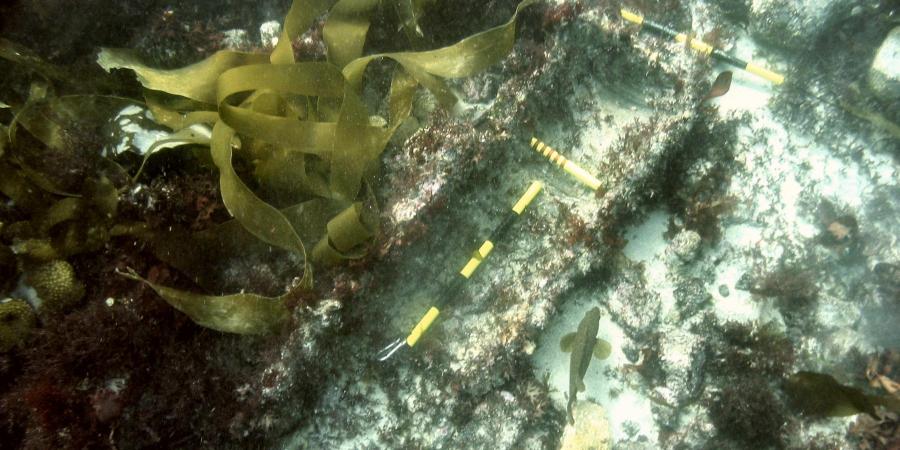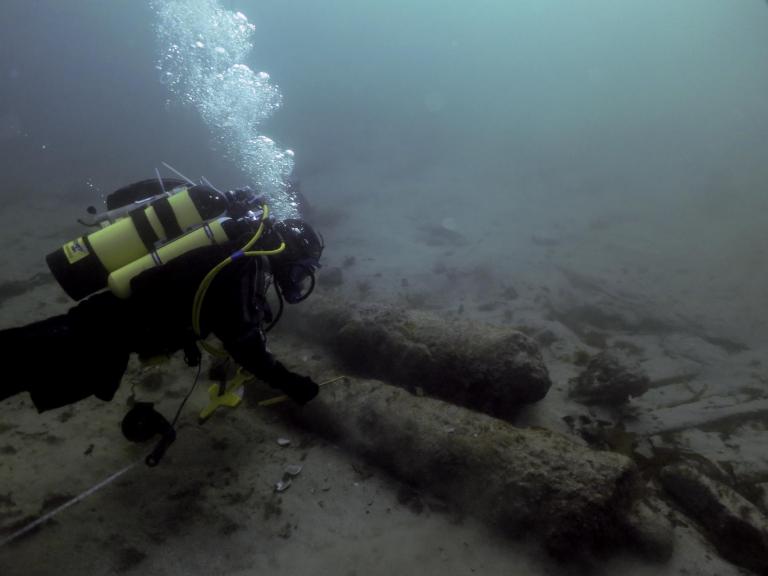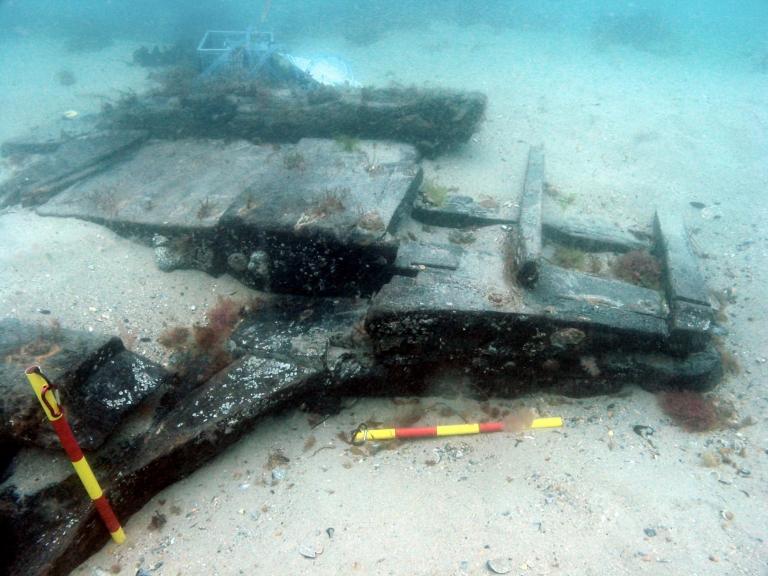HMS Colossus has had a remarkable history both afloat and as a wreck. Launched in 1787 at Gravesend, it was a Leviathan Class ship built to the lines of the French Courageux Class. A 3rd rate warship of 74 guns HMS Colossus had an active service life and fought in many battles including the blockade of Toulon in 1793, the action off Groix in 1795, the Battle of Cape St. Vincent 1797, the blockade of Malta in 1798 and it also served as a stores ship for the Battle of the Nile in 1798. On its final voyage in 1798 HMS Colossus was transporting wounded back to England, along with the body of Admiral Lord Viscount Shuldham and eight crates of Greek red and black figure vases belonging to William Hamilton. The warship stopped at Lisbon to collect a cargo of spices in November, by the 7th of December it had sought shelter in the Isles of Scilly, while it waited for favourable winds to finish the last leg of its journey. HMS Colossus was anchored in the lee of St. Mary's, but on the 10th December as a gale came in from south-east, its anchor cable parted. The smaller bower and sheet anchors were dropped and its masts were struck but the Colossus dragged the anchors and was driven onto rocks. All but one of the crew were rescued by the 11th of December, and the next day Colossus had fallen over onto her beam ends.


HMS Fearless was sent out on the 26th December to oversee the salvage of the wreck. Employing islanders to break up the wreck, many stores from the wreck were loaded onto HMS Fearless, and Admiralty records of the salvage record '... many useful mast and spars, copper, iron, etc and an anchor 72 cwt. were brought off her with various armaments, and among the salvaged cases was one containing the embalmed body ofAdmiral Shuldham'. Only one crate of Hamilton's Greek vases was recovered. After the first salvage of HMS Colossus, many others attempted to raise material from the wreck, often illegally well into the 19th century.
The wreck was gradually forgotten until the 1960s when Roland Morris and a team of divers began looking for the wreck site. Starting in 1967, the site was discovered in 1974 when artefacts from HMS Colossus were found on the seabed. The site was designated in 1975 under the Protection of Wrecks Act (1973). Roland Morris continued to investigate the site up to 1984 and the discovery of galley bricks and rudder pintles seemed to indicate that the positions of the bow and stern of the ship had been found. In 1975 working with the British Museum, Roland Morris excavated the bow area of the site to Hamilton's collection of Greek pottery. Around 35,000 sherds were recovered, enough to allow the reconstruction of several original pieces. Similar work continued on the site into the 1980s, and the site lost its protected designation in 1984 when it was reported that most of the pottery had been removed. Little more was known about the wreck until1999/2000 when a local diver, Todd Stevens, discovered a new section of wreckage. It appeared to have been recently exposed and included part of a large carved wooden statue. Another diver, Mac Mace, also claimed to have discovered the site in 2001. The site was designated once again as a protected wreck under the Protected Wrecks Act of 1973 as the stern section of HMS Colossus.





